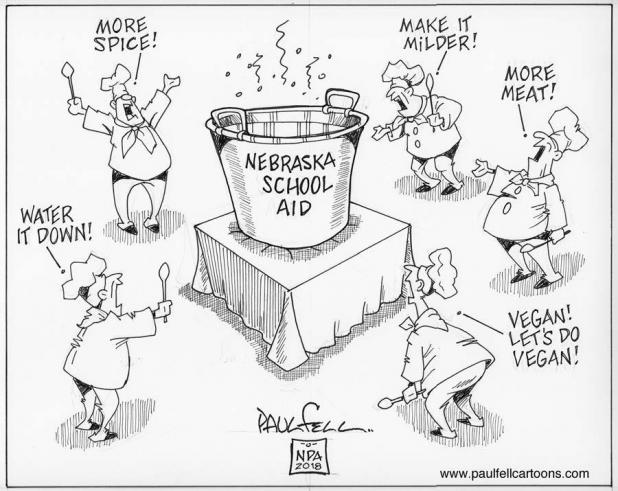
Could this be session for school finance updates?
I have only known four people who could adequately and understandably explain the state’s school finance system to me, and three of them are dead.
That pretty much says it all. To most of us, school finance is a bunch of numbers and schemes that are differentiated by acronyms. So, grab your notepad and start writing this down because a group of senators has been deep diving into proposed changes in school aid in Nebraska.
They’re looking at TEEOSA—the Tax Equity and Educational Opportunities Support Act—and other acronym combinations. Some have been on the books for years, some are flawed and others may just be a dream—or a nightmare. Some will say there is no equity and too little support.
Sure, there are others out there who understand the system and can help senators wade through the benefits and deficiencies. But I could never wrap my journalist brain around a lot of that.
I understood paying each school a certain amount of money per student, but when they started talking about equity to school funding between land-rich districts and schools with a wealthy tax base, my mind turned to those great chocolate chip ice cream cookie sandwiches they served in the Capitol cafeteria.
Besides, that all sounded like property tax relief which has been another one of those oft discussed and sometimes cussed systems over the years.
Guess what? The two are still inseparable.
That’s why Education Committee Chairman Sen. Mike Groene of North Platte called together a working group to come up with something to put before their colleagues in January.
Groene says the squeeze felt by taxpayers now is no different than the squeeze felt decades ago when lack of adequate state funding forced school districts to raise property taxes to pay up to 70 percent of school’s operations in some cases. Efforts to relieve the property tax burden with other sources of revenue have never really caught on. Groene calls it “promises unfulfilled.”
The working group, some legislative staffers and folks from the Legislative Fiscal Office have started out with a look at the history dating back to the state’s revenue crisis of 1967 when new Governor Norbert Tiemann was faced with empty coffers because voters had dismantled the existing tax system. His decisions on a new state sales and income tax cost him a second term, but he and many others believed it was the right thing.
The history gets better. In 1985, lawmakers pushed for school consolidation and forced elementary-only districts to merge with K-12 or high school-only districts, while also setting a 45 percent ceiling on property taxes to support schools.
Years of debate on the issue culminated in one of the largest Education Committee public hearings in history with attendees filling the East (Warner) Chamber and spilling out into the rotunda as the Education Committee screened a four-minute Dr. Seuss video of “The Zax.”
A subsequent petition drive led to the repeal of the ceiling and three years later the Legislature created the School Finance Review Commission to study ways to lessen that 70 percent property tax burden when folks in other states were only paying 43 percent. State support for Nebraska schools at that time was about 25 percent, while the national average was 50 percent.
The commission came up with the current state aid formula—TEEOSA—which was enacted in 1990 as LB 1059. That’s one of those infamous bill numbers that still strikes fear and terror into the hearts of legislative observers. It ranks right up there with LB 775—the Employment and Investment Growth Act passed during the Kay Orr administration (1987-1991) to keep ConAgra in Nebraska.
As reported in a recent Lincoln Journal-Star article, TEEOSA calculates the difference between the money schools need to educate every child and what resources are available to each district through a property tax levy in order to determine how much state aid districts should receive.
Groene said the goal of TEEOSA was to increase state funding to each school while also loosening the dependence upon locally assessed and collected property taxes.
But lawmakers haven’t always made good on that promise. As a result, school administrators are scared of relying on state funding. And taxpayers don’t trust anybody, he said.
A bill to provide property tax relief and adequate state funding for schools is the goal of Groene and his colleagues. Right.
Good luck with that!
